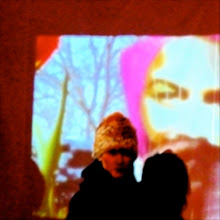Live art, performance, ceremonies and rituals are ephemeral by their very nature. It is the responsibility of the creative community to capture and preserve these moments by whatever means available in order to understand identity and history and to communicate to wider audiences and future generations.astrid almkhlaafy
This last Sunday, I took my designed experiences class to the Sri Sivan Temple in Geylang for an immersive experience into Singaporean identity and culture. My idea was so put the students into an unfamiliar, possibly uncomfortable setting, task them with documenting and let them unfold and observe, absorb and record. The goals of the workshop were multi-tiered: to confront identity, to record and document, to collect ingredients for future projects and to become comfortable in the role of cultural archivists.
This class is quite fascinating. we are working towards the first youth Olympics, briefed with creating content—of an experiential communicative nature— for the opening and closing ceremonies. The actual youth Olympics are in 2010, here in Singapore and the youth village will be on our university campus.
We've been invited by the Olympic committee and Johnny Lau to be actively involved in putting forward concepts for the events, and so ADM has jumped on the opportunity. My course is starting with the meta. What is a ceremony? a ritual? what is identity? what do we hope to communicate to an enormous international broadcast audience about Singapore? who are we? and how do we shape our concepts within the context of something rather sacred? a ceremony of national importance?
Our first field trip then was one of immersion. we were graciously invited by Arul Ramiah to come and observe and document the performance of Sita Jameison and Govin Tan, an Irish female, deeply spiritual chanter and a 17 year old Chinese Singaporean tabla player.
The setting was within the temple, surrounded by devotees, priests, sounds, smells, colors, details and action. The audience sat on the floor and faced the musicians while to our backs the temple continued on in its activities. The majority of my students were not Indian and none were Hindu by faith. Many had never stepped into a Hindu temple. There was some initial trepidation, but the role of documenting, and the cameras, notebooks and videos helped to remove the focus from self to task. All students had to document in at least two ways. they were asked to take note of colors, of architectual details, of sensory ingredients within the temple. To notice processions, motions, gestures. To observe the actual performance and to document that as well.
This workshop focused on important aspects of a designers' research duty: observing, collecting, archiving, and eventually in sorting and presenting. In the long term i hope to see Olympic proposals that incorporate and borrow, mix and 're-present' details from the experience in original shape and form.
We will continue immersing ourselves in culture over the semester, with the emphasis being on identity and culture. I expect to see some brilliant proposals for the Olympics. It was a very generous first step into understanding the richness of this territory, and special thanks go out to Arul and Sita for setting this experience up.
Here was the temple etiquette we received from Arul
TEMPLE ETIQUETTE
For Camera/Video Crew & Visitors
An Indian temple, like other places of worship, has its own set of unwritten and written rules. Visitors who wish to document temple traditions or temple concerts are encouraged to do so in a culturally sensitive way. Attitude of temples to photography, filming and interviewing devotees and priests vary vastly across temples around the world. To encourage temples to document their oral and social history, Studio Arul encourages you to observe the following rules of etiquette:
For Camera/Video Crew & Visitors
An Indian temple, like other places of worship, has its own set of unwritten and written rules. Visitors who wish to document temple traditions or temple concerts are encouraged to do so in a culturally sensitive way. Attitude of temples to photography, filming and interviewing devotees and priests vary vastly across temples around the world. To encourage temples to document their oral and social history, Studio Arul encourages you to observe the following rules of etiquette:
- Attitude of Reverence. A temple is a sacred space where a meditative and contemplative attitude is encouraged. Adopt an attitude of respect and reverence on the temple grounds.
- Respect Elders and Priests. There is a deep reverence for elders and priests within the Indian tradition. Putting your palms together in a prayerful manner when greeting elders and priests is a sign of respect that will be highly favored.
- Dress Code. A formal and conservative dress code is the best. When in the house of God, there is an expectation that you honor the divine by wearing your Sunday best. Silks, jewelry and formal tailored attires are preferred. No shorts, tube tops or revealing clothes which are considered disrespectful. Socks and shoes should not be worn on the temple grounds.
- Wash your Feet. If possible just after you enter the temple wash your feet and look up and contemplate the gopuram. This serves as reminder for you to shift your energies towards heavenly matters and humble yourself before God.
- Sit Cross Legged. Sitting and meditating on the temple grounds after prayers is encouraged. Never point your feet out to the deity or to the performers on a stage when sitting on the floor. This is considered deeply sacrilegious.
- Smile and Nod. Indians often study another person’s attitude, aura and vibration. A smiling countenance and a humble/agreeable attitude will score top points and typically grant you favors that direct verbal requests will not. Being aggressive and pushy however is culturally unacceptable and will often backfire.
- Do Not Step Onto the Stage. The stage is often demarcated by a carpet where artists sit and perform. The stage is considered a sacred space and non-performers should not step into this space or allow their kids to run across it.
- Do not touch the Statutes or Musical Instruments. Certain statutes are considered sacred and should not be touched. Musical instruments are also considered sacred and only the artist is allowed to touch them.
- Getting Good Shots without Intruding. Many devotees and priests do not appreciate a camera being thrust onto their faces when they are in the midst of deep prayer, meditation or rituals. Keep a respectful distance when filming. And do not block the devotees path or sight of the sanctum to get a better shot.
- No Meat, Smoking or Alcohol. The temple is a space where the consumption animal meat, and other forms of toxins like drugs and alcohol are strictly prohibited.
- Learn through Observation. The best way to learn is through observation. Observe what the other Indians in the temple are doing – where they stand and how they partake in the prayers etc. Most priests and devotees do not appreciate being bombarded with questions on the whys and hows of their traditions from strangers. Build goodwill slowly through repeated temple visits before asking questions. The receipt of spiritual knowledge is considered a privilege, not a right.




No comments:
Post a Comment